-
Car Reviews
- Car News
-
Car Comparisons
Latest comparisons
- Chasing Deals
Range-topping hybrid the best to drive of all new CR-Vs – even if we’d probably still recommend the cheaper VTi LX AWD
The turbocharged models of Honda’s new, sixth-generation CR-V have left us impressed, but as the world moves away from fossil fuels, the future of this nameplate depends on hybridisation. Enter this, the hybrid CR-V e-HEV RS.
The only hybrid in the new CR-V range for now, the front-drive e-HEV RS intends to take on formidable hybrid midsize SUV foes such as the Toyota RAV4, Nissan X-Trail E-Power and Subaru Forester Hybrid – along with many others.
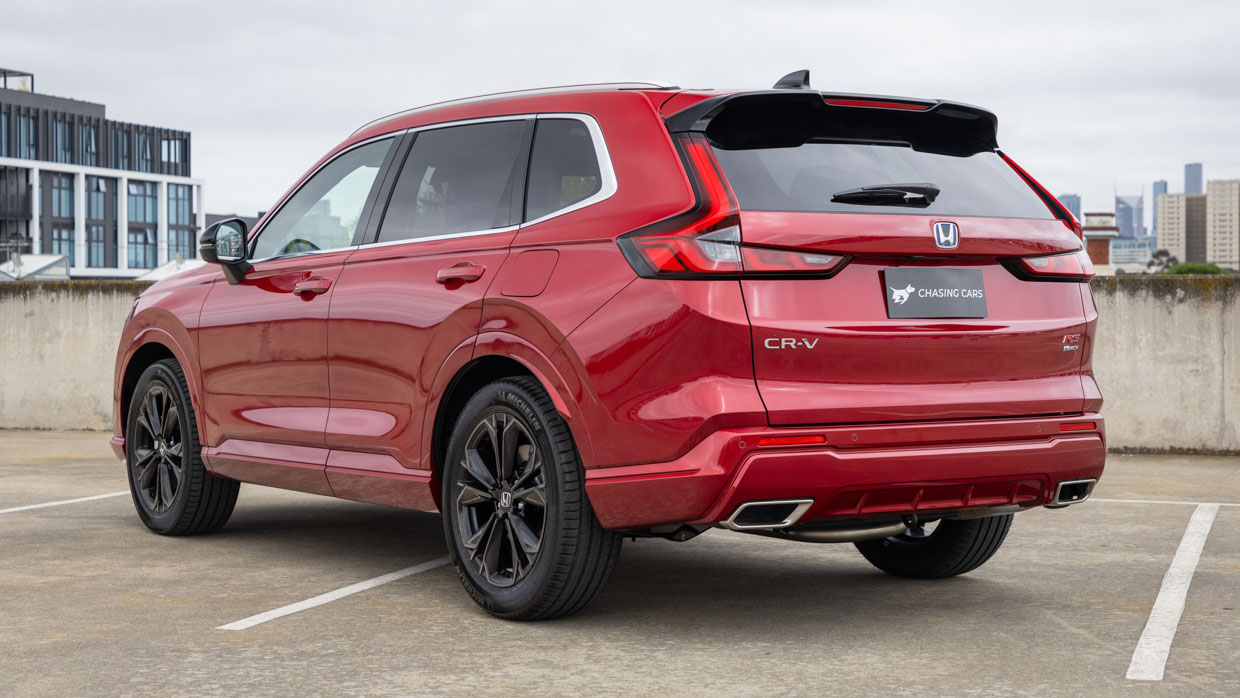
The new CR-V is the largest since the badge was introduced in 1997 – 69mm longer, 11mm wider and on a 40mm-longer wheelbase than the previous model.
As well as more cabin space, the increase in size has enabled Honda to slot an entirely new model, the ZR-V midsize SUV, between the smallest HR-V and the new larger CR-V.
In a totally different way to Toyota’s hybrid system, the Honda CR-V e-HEV RS’s onboard petrol engine functions effectively as a generator for a small lithium-ion battery, which then powers two electric motors.
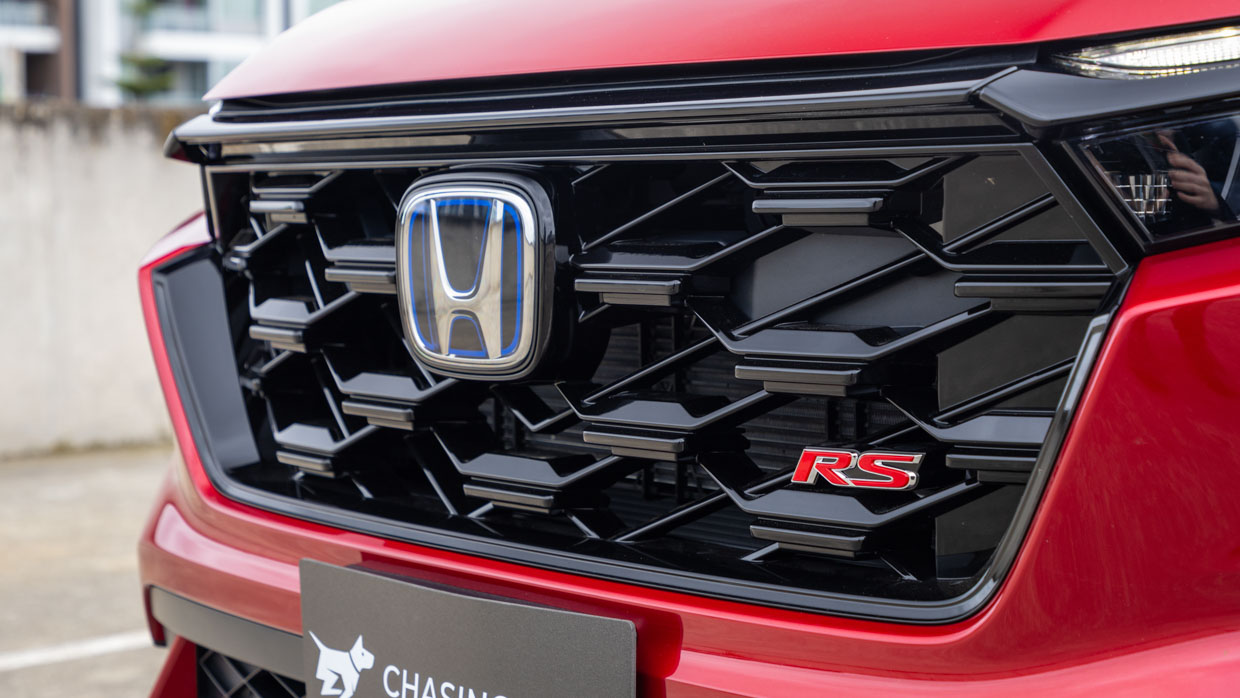
That’s excluding at higher speeds, where the engine can directly power the front wheels via a lock-up clutch.
Whereas the non-hybrid CR-Vs in the range use a 1.5-litre turbocharged inline-four with 140kW and 240Nm and a constantly variable transmission (CVT), the e-HEV RS has an Atkinson cycle 2.0-litre naturally aspirated inline-four (with a claimed thermal efficiency of 40 percent).
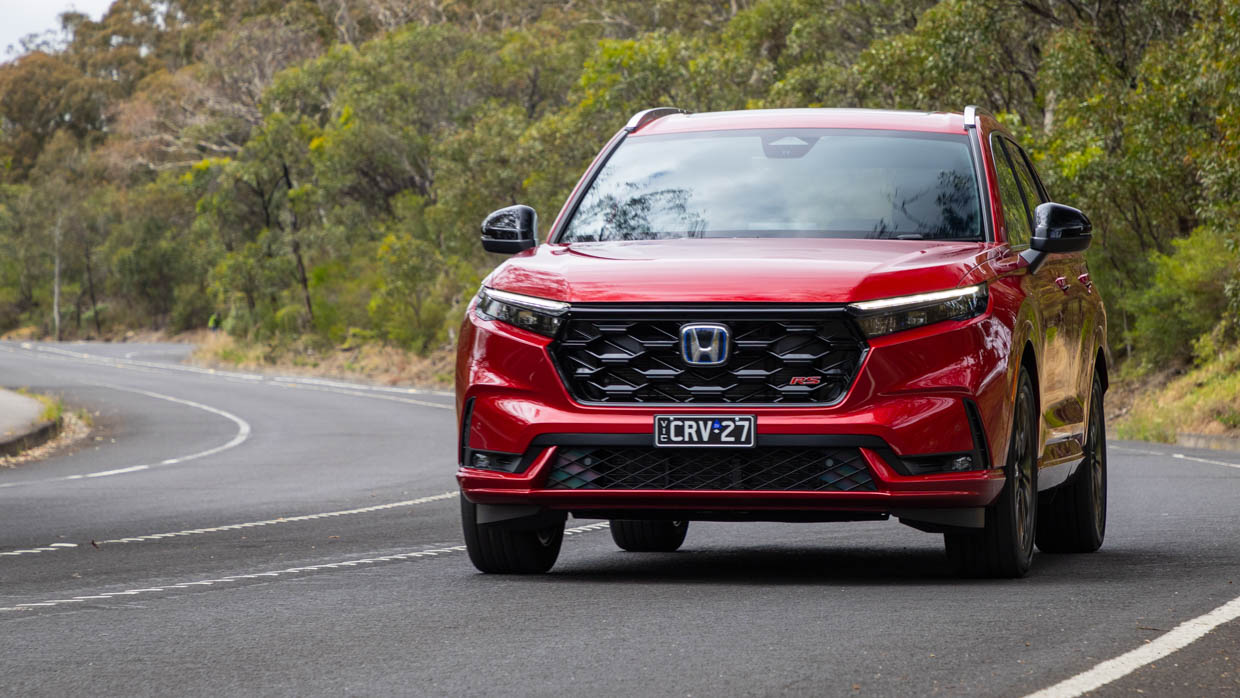
Honda states its outputs as 135kW/335Nm, with a total combined system output of 152kW. There is effectively no transmission at all, despite listing E-CVT on the specifications list.
The e-HEV RS is a closed-system hybrid, not a plug-in hybrid like the Mitsubishi Outlander, and has no electric-only mode, switching the petrol engine on automatically as-needed.
At $59,900 driveaway, the e-HEV RS is the range-topper of the new CR-V line-up. That means it has the most standard equipment of any new CR-V.
It comes with high level of specification that includes:
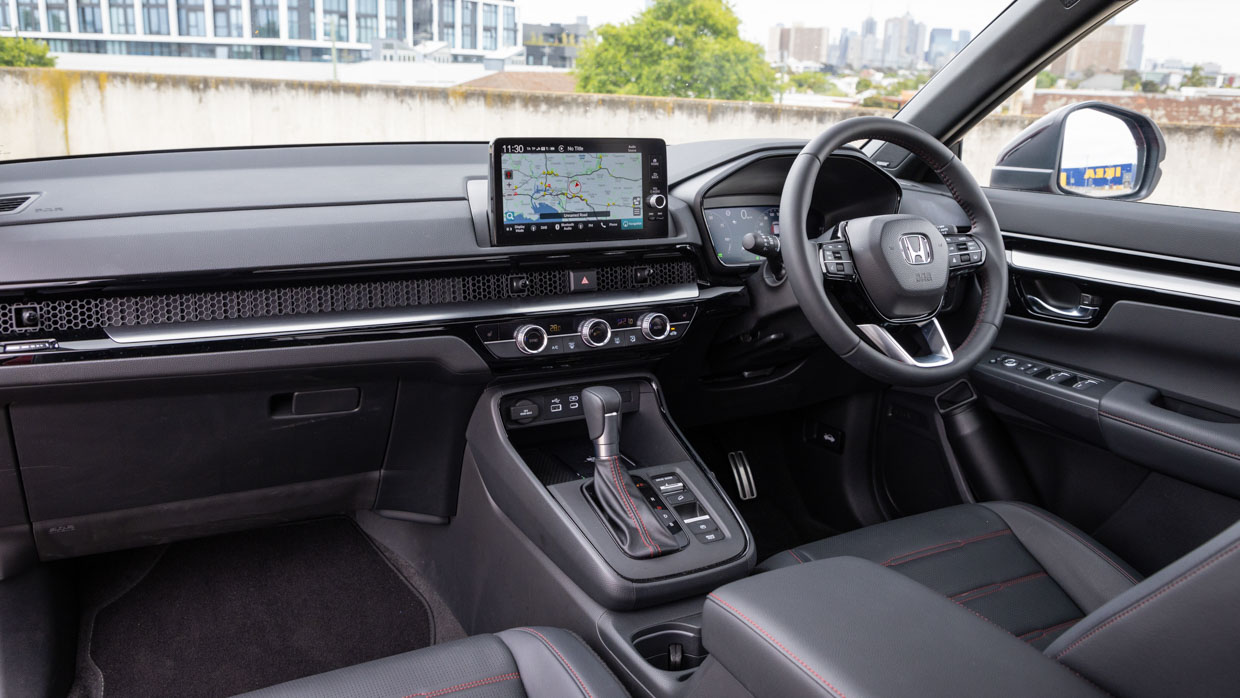
Outside of the unique hybrid powertrain, the additional $2900 over the VTi LX grants you:
Although importantly, you do lose the all-wheel-drive of the VTi LX. While an all-wheel-drive hybrid CR-V is offered overseas, in Australia the e-HEV RS is front-drive only.
It would be interesting to directly compare the e-HEV RS to Nissan’s X-Trail ePower Ti-L.
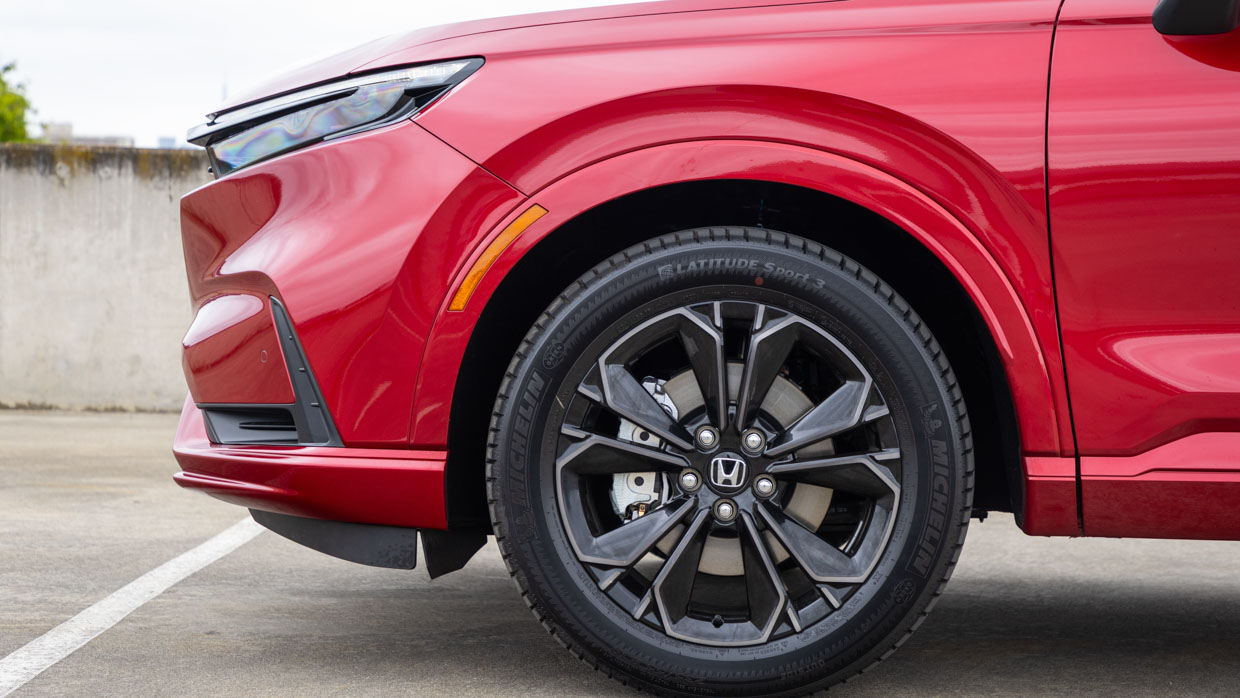
At $57,190 (before on-road costs), the Ti-L’s hybrid system uses the same concept as the Honda’s, but it’s all-wheel-drive and loaded to its ceiling with luxe-spec standard equipment.
Over the CR-V e-HEV RS it gains quilted Nappa leather, tri-zone climate control, heated rear seats, a head-up display, larger 12.3-inch dual digital displays and 20-inch wheels.
The new CR-V is superbly easy to drive every day, with excellent forward visibility, a commanding seating position and well-calibrated controls such as the steering and brakes, which feel natural and just-right in a uniquely Honda kind-of-way.
The e-HEV RS is no different, and the e-HEV RS drives in a totally unique way compared to the regular, petrol-powered models in the CR-V range.
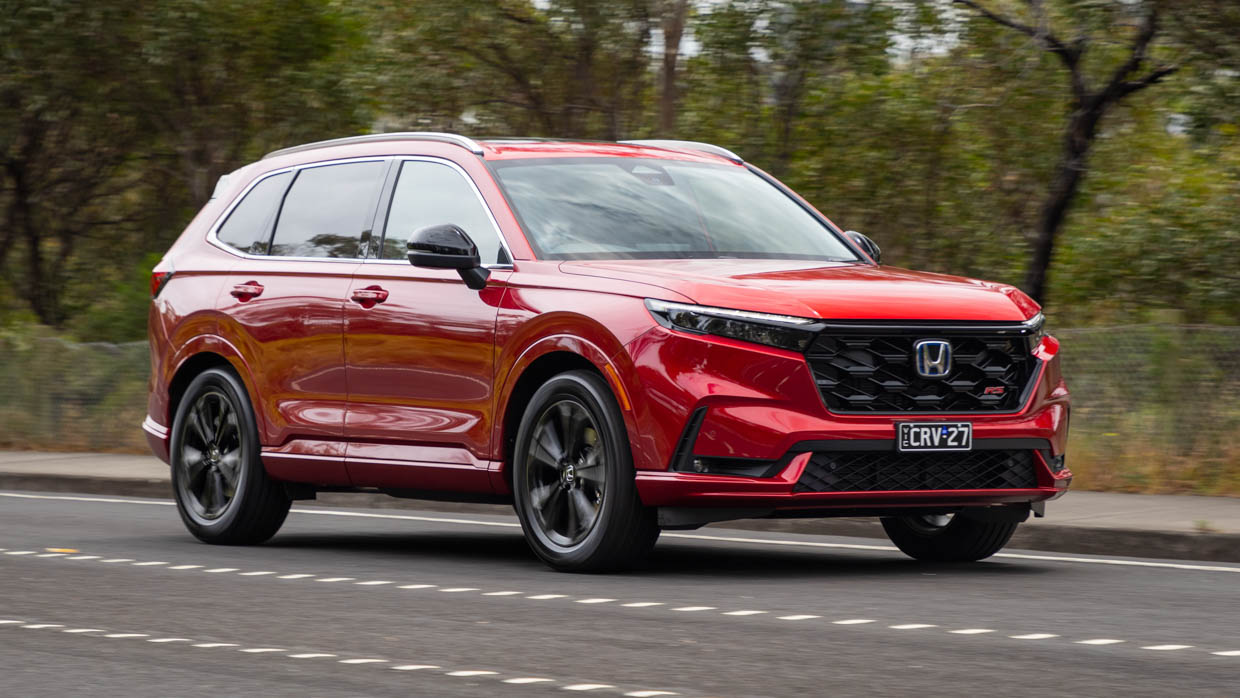
With nothing but electric power under your right foot at urban speeds, the torque is instant, smooth and punchy – the e-HEV RS often sits silently at traffic lights and quietly ambles about car-parks.
As well as the responsive electric acceleration, we love how quickly you can switch from drive to reverse and back, making three-point turns a very rapid and seamless affair.
There are also re-gen brake modes, although nothing as aggressive as the one-pedal mode you get in some electric vehicles (and other hybrids).
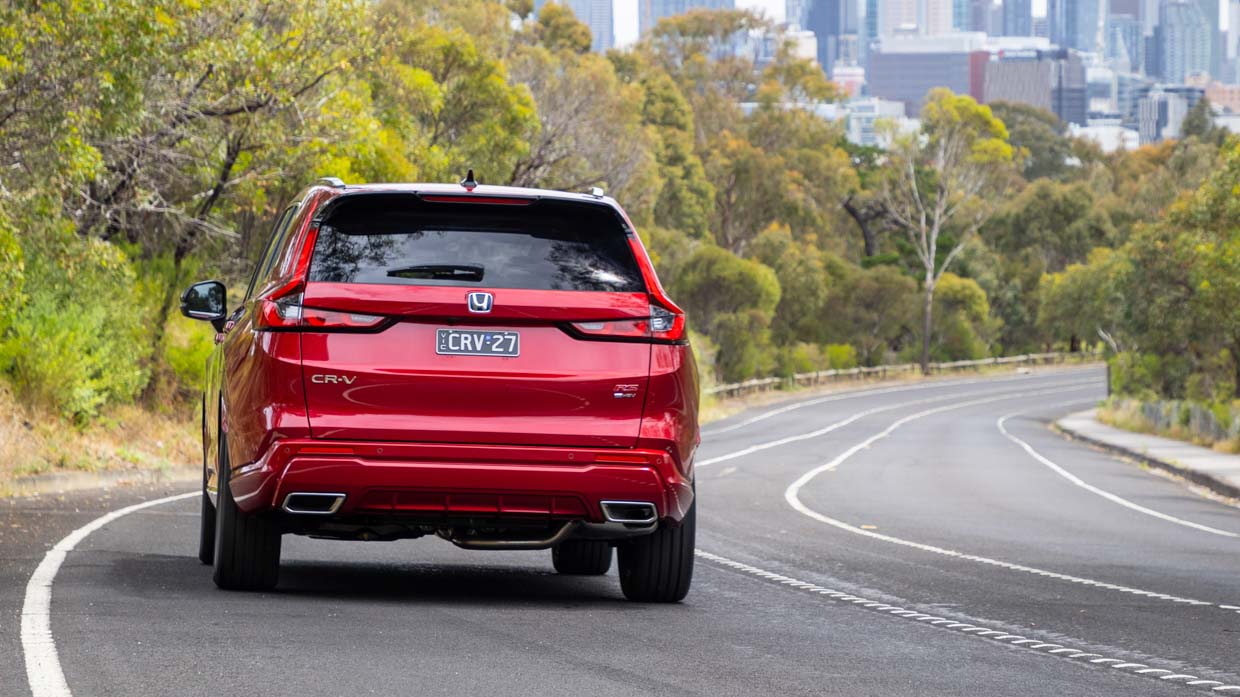
Dynamically, the new CR-V has actual driver appeal – even if its bristling chassis is desperately wanting for a powertrain to match (a Type R CR-V, with some turbo grunt and gear ratios, would actually work, we reckon).
While the non-hybrid models in the CR-V range now use a characterful turbocharged engine, their spirit is somewhat dampened by being paired to the CVT transmission, something about as titillating as a bowl of Weet-Bix in water.
Curiously, it’s the e-HEV RS that comes closest to matching an appealing powertrain with that very well-engineered, well-handling chassis – making the hybrid the variant in the CR-V line-up with the most driver appeal.
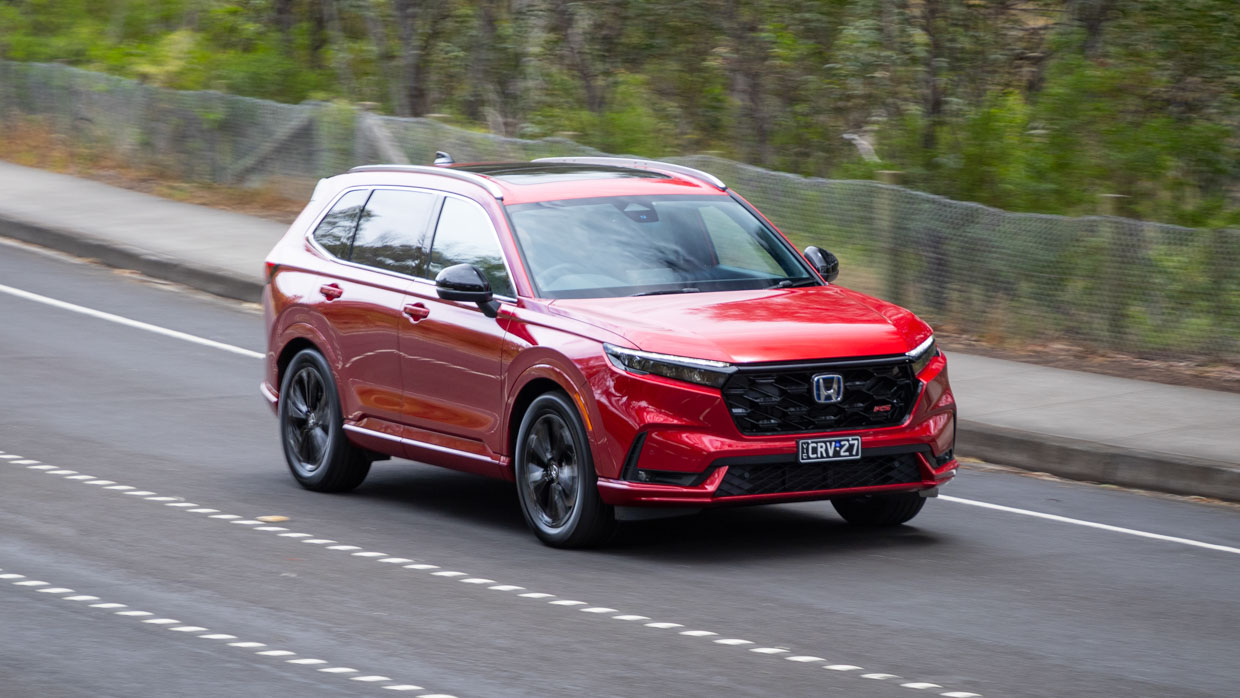
In Sport mode, the artificial engine noise is convincing, aggressive and almost good – we don’t hate it. The faux soundtrack almost simulates gears, ‘kicking down’ like a vehicle with a normal transmission.
The e-HEV RS is pretty brisk, too, with front wheelspin possible out of tight corners to the point that it might benefit from all-wheel-drive traction.
Back in the real world of roundabouts and traffic lights, one of our biggest criticisms of the hybrid Honda is a refinement one, in that the petrol engine could be quieter. You’re not going to need earplugs but you can notice it kicking in and out a little bit too much, ruining the serenity.
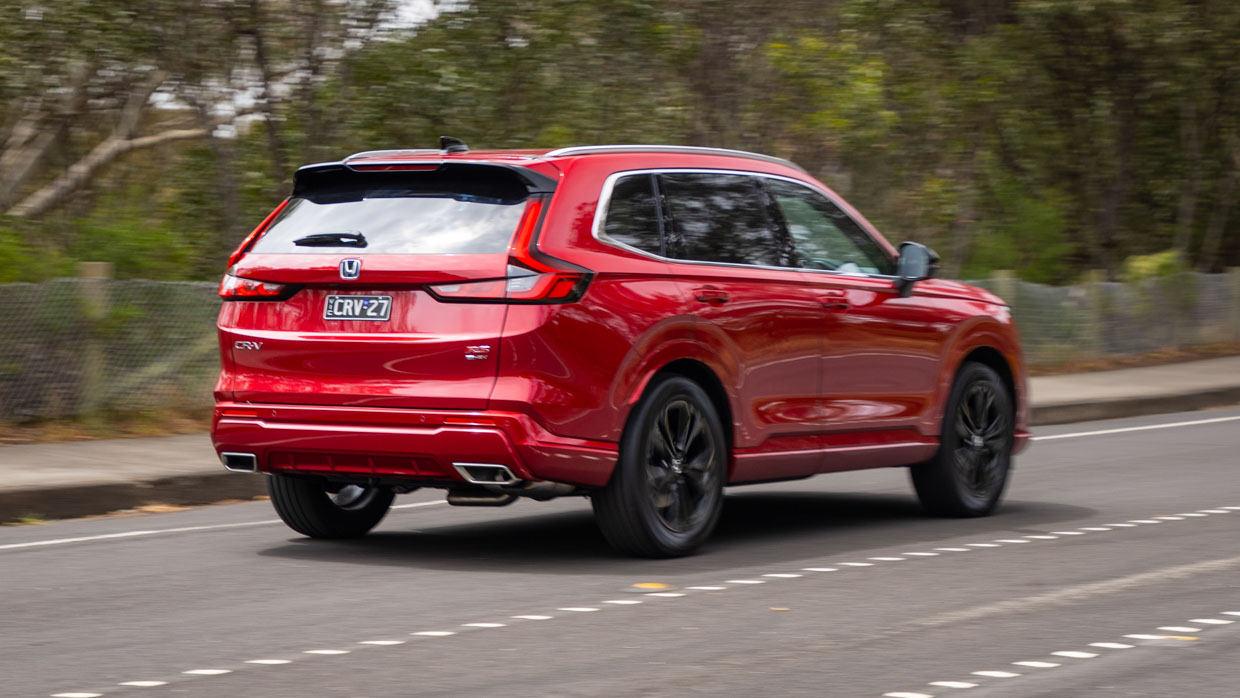
The jury is also somewhat out on the e-HEV RS’s ride quality. While it’s comfortable enough, compared to other CR-V grades we’ve tested, it’s like the damping has not been optimised for the additional 148-158kg of on-board weight it carries over other front-drive, five-seat CR-Vs.
It can thud harshly over some bigger pot-holes and road joins, making us curious to drive it back-to-back with other CR-V grades.
The new CR-V’s interior is a massive improvement over the old CR-V. It’s a smart, grown-up, fuss-free place, with plenty of space and rock-solid build quality. For a “midsize” SUV it has a very wide and long interior, with lots of shoulder space and second-row knee-room.
The e-HEV RS’s unique black headlining and red stitching lends it a sporting feel. We love the row of handsome air-conditioning buttons and dials which introduce a tactile experience increasingly lost as more manufacturers move these controls into touchscreens (to save money, and free up dashboard space).
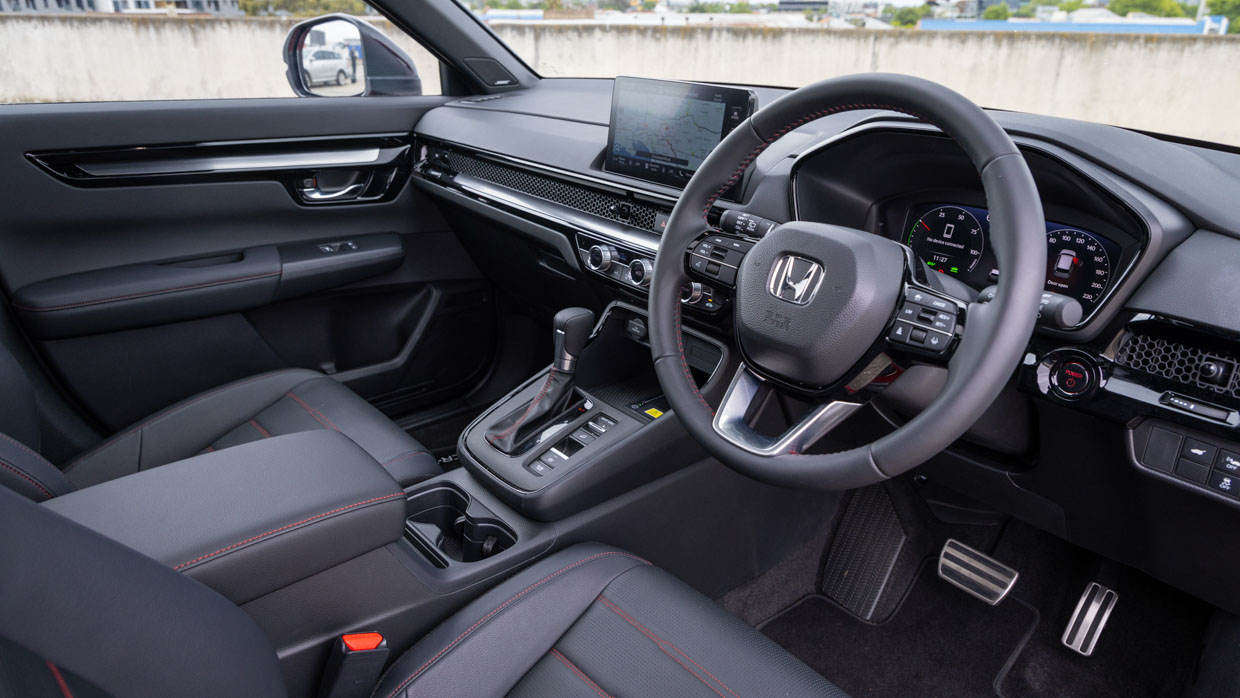
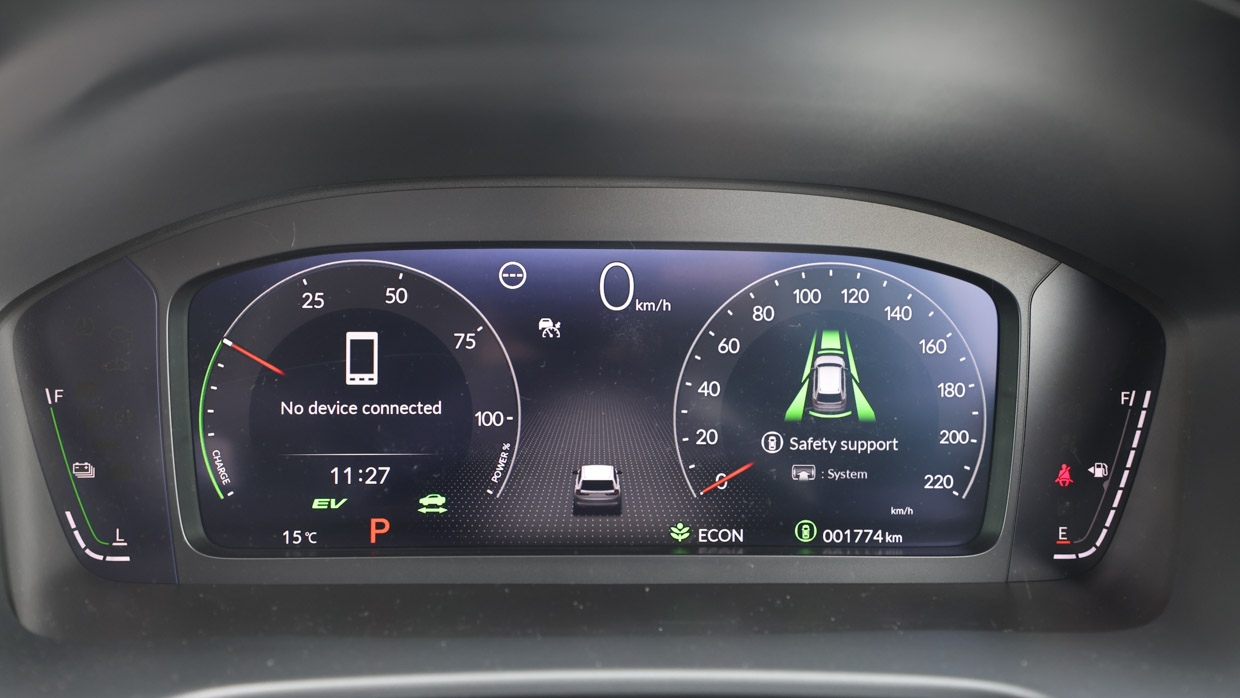
Both the CR-V’s digital displays boast contemporary white-on-black graphics, nice and bright Apple CarPlay and wired Android Auto, although at 9.0 inches for a top-spec model, some tech-heads might find the central infotainment screen a little small; same, too, the 10.2-inch digital instrument display.
The lack of head-up display also seems like a missed opportunity.
The e-HEV RS inexplicably uses the same tall, dorky, cheap-feeling shift selector as all other CR-V models. We’d love to see it use the compact, well-designed shift-by-wire module from the Civic e-HEV RS.
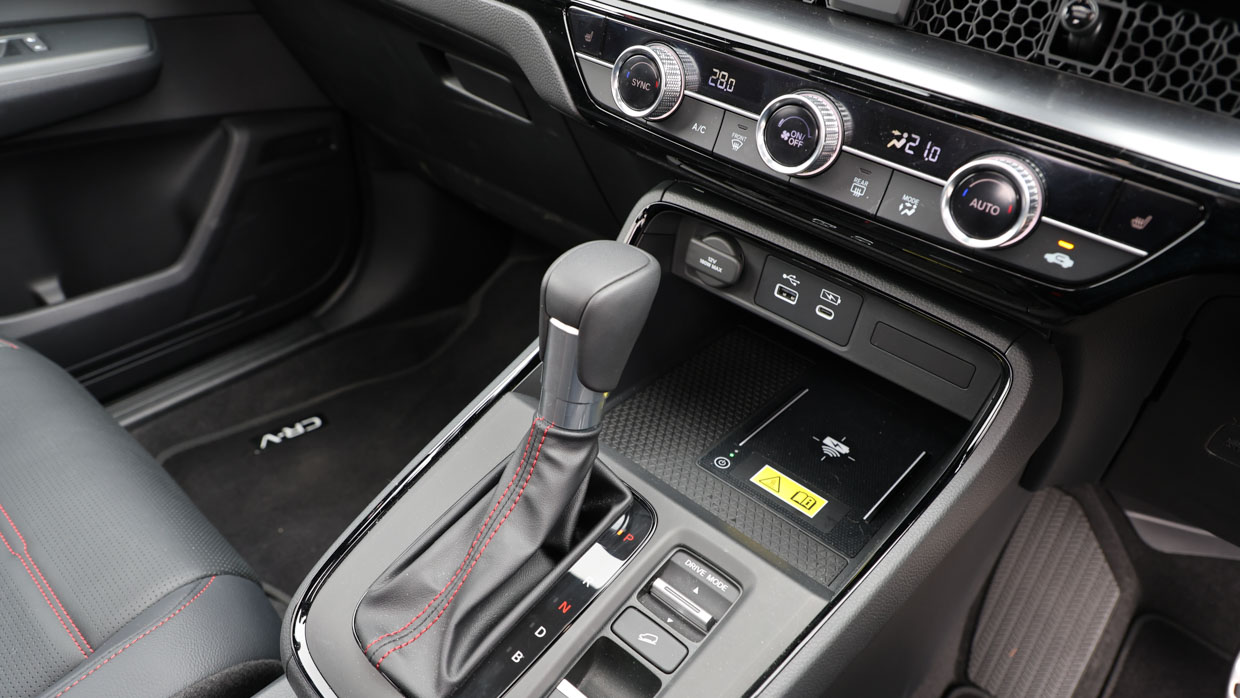
While feeling ‘premium’, this is not a particularly luxe place – a direction many other SUV makers are trying to take their vehicles, such as Mazda and Nissan.
Despite being the halo model, the e-HEV RS has the same abundance of ‘dog-nose’ soft-touch plastic used on the dashboard and door cards as the base $44,500 VTi X. A bit of leather appointing for the top-spec grade would not have gone astray.
The back seat has plenty of space and we love how the rear doors open almost 90 degrees, enormously wide, allowing very easy access.
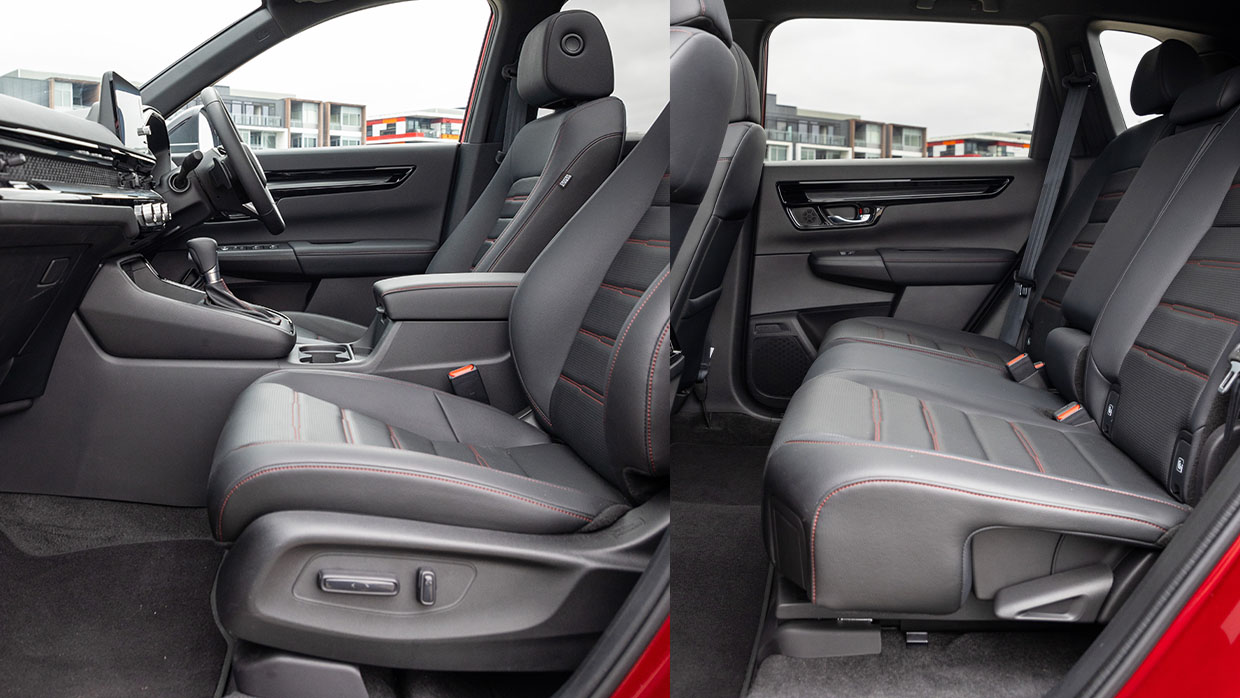
There’s plenty of knee- and foot-room, even for adults. However, for a top-spec model the lack of tri-zone air-conditioning and in-built rear blinds is pretty poor.
There are two sets of ISOFIX points for the outboard rear seats and, curiously, only two top-tether anchoring points.
At 581 litres the boot is a good size with a nice, low floor. A sliding second-row means you can maximise boot space if you’re just using the back seat for kids. The rear seats are a 60/40 split with no ski-port.
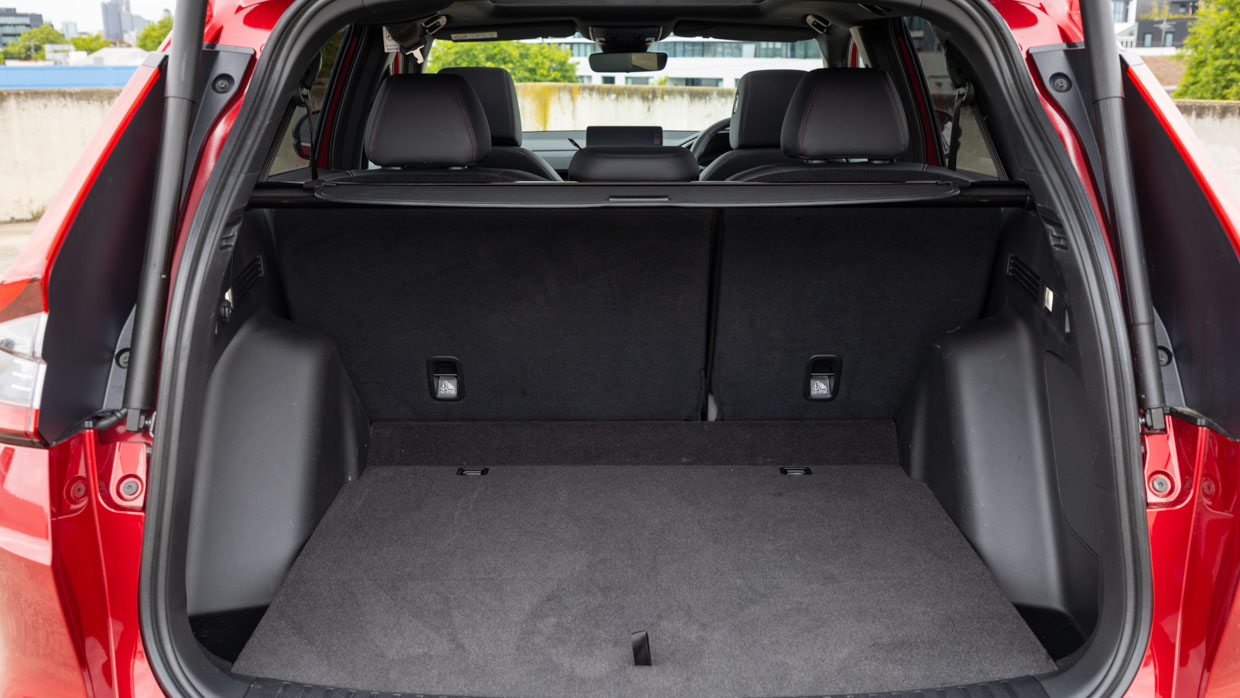
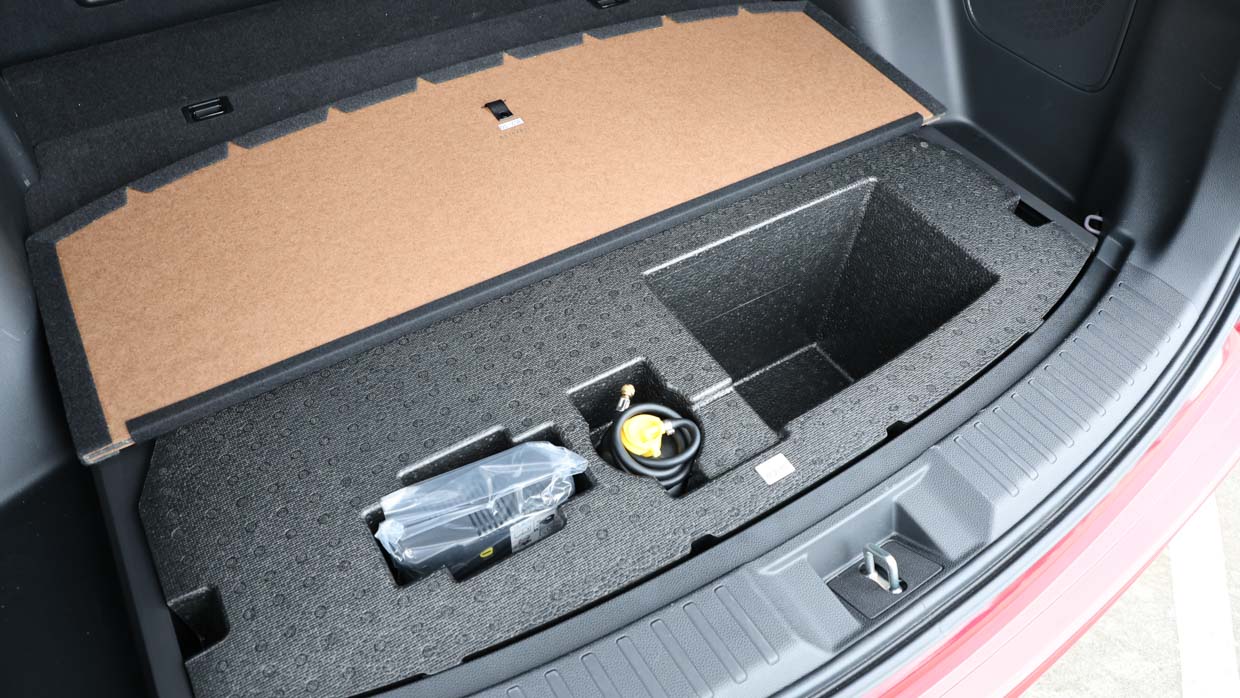
The CR-V’s boot does miss out on some clever features of competitors – there’s nowhere to stow the cargo blind when not in use, there are no buttons for folding down the rear seats from the rear of the vehicle. Further, we would have liked to see a 220-volt outlet (there’s just a 12-volt outlet).
Where other grades get a full-size spare wheel or space-saver, the e-HEV RS is the only CR-V to provide a puncture repair kit, somewhat diminishing its country useability and grand touring suitability.
As a latest-generation model, the new Honda CR-V is a very safe vehicle – about as safe as brand new cars get, loaded to the roof racks with standard safety equipment.
The local Australasian New Car Assessment Program (ANCAP) has not yet crash-tested the new Honda CR-V, neither has its European equivalent, Euro NCAP, though Chasing Cars understands this is likely to change in the near future.
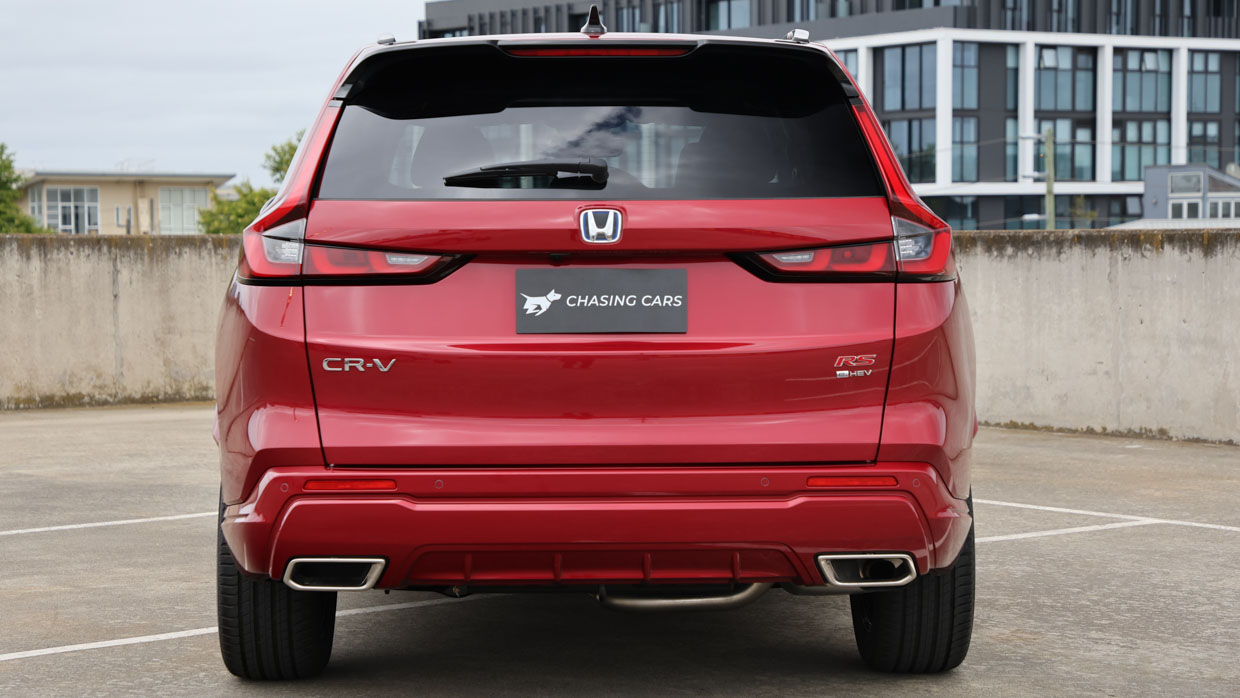
To Honda Australia’s credit, the CR-V e-HEV RS is fitted with Acoustic Vehicle Alerting System (AVAS) which uses an external speaker to produce a subtle humming noise at low speeds, when the vehicle is in its electric-only mode, to warn pedestrians.
Required by law in some overseas jurisdictions, it’s still a voluntary thing in Australia. Many hybrids, and some electric cars, don’t bother.
The new CR-V’s active driver assist systems such as lane-keep assist and adaptive cruise are very good, the Honda tracking confidently in the middle of any lane-markings.
One of the major questions is the fuel economy. Is it improved enough to help justify the $2900 premium over the non-hybrid VTi LX?
Based on a highway drive using the Honda’s onboard trip computer, you could expect between 5.5-6.0L/100km on the motorway. In the urban environment, we saw fuel consumption around 6.3-6.5L/100km.
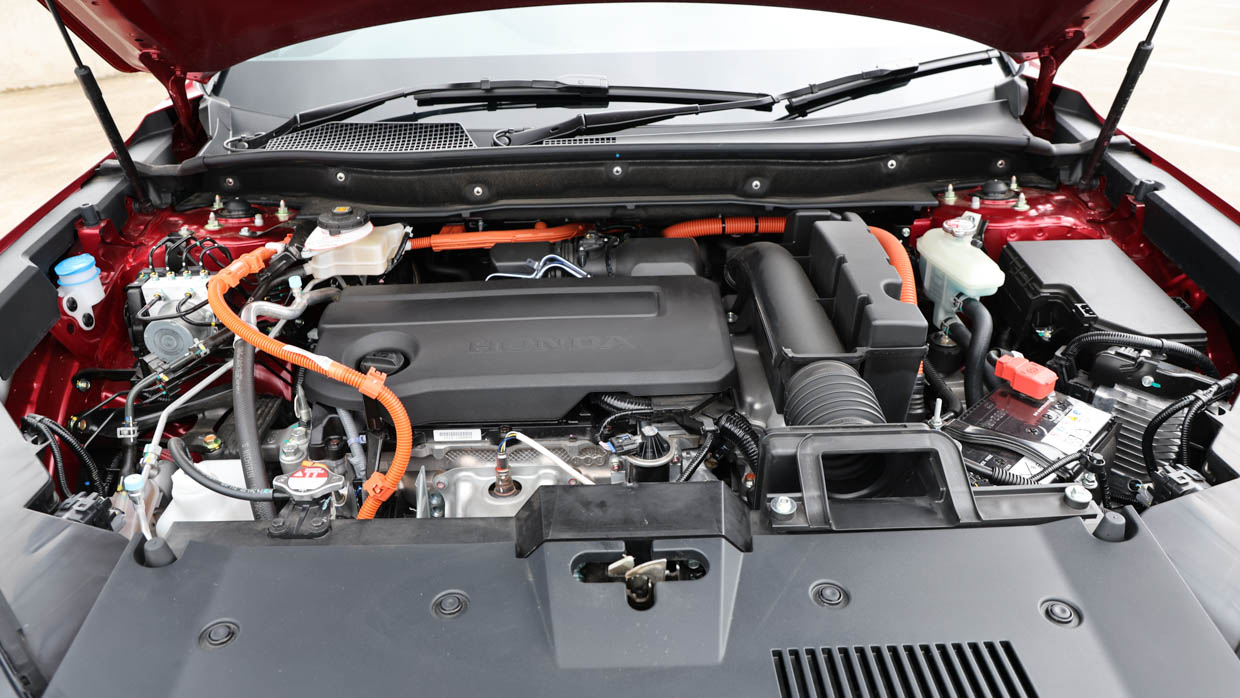
While that’s not as good as the larger and more conventional parallel hybrid Toyota Kluger, which we’ve seen do 5.8L/100km in our own urban testing and around 5.1L/100km on the motorway, it’s still pretty impressive.
Importantly, the CR-V e-HEV RS can run on cheaper 91RON octane fuel, whereas the Toyota needs pricier premium 95RON as a minimum.
Using the official fuel figures and an assumed petrol price of $1.75/litre, it would take roughly 75,000km before the e-HEV RS ‘paid off’ its $2900 premium over the VTi LX AWD (ignoring the minimal additional equipment the extra outlay gets you).
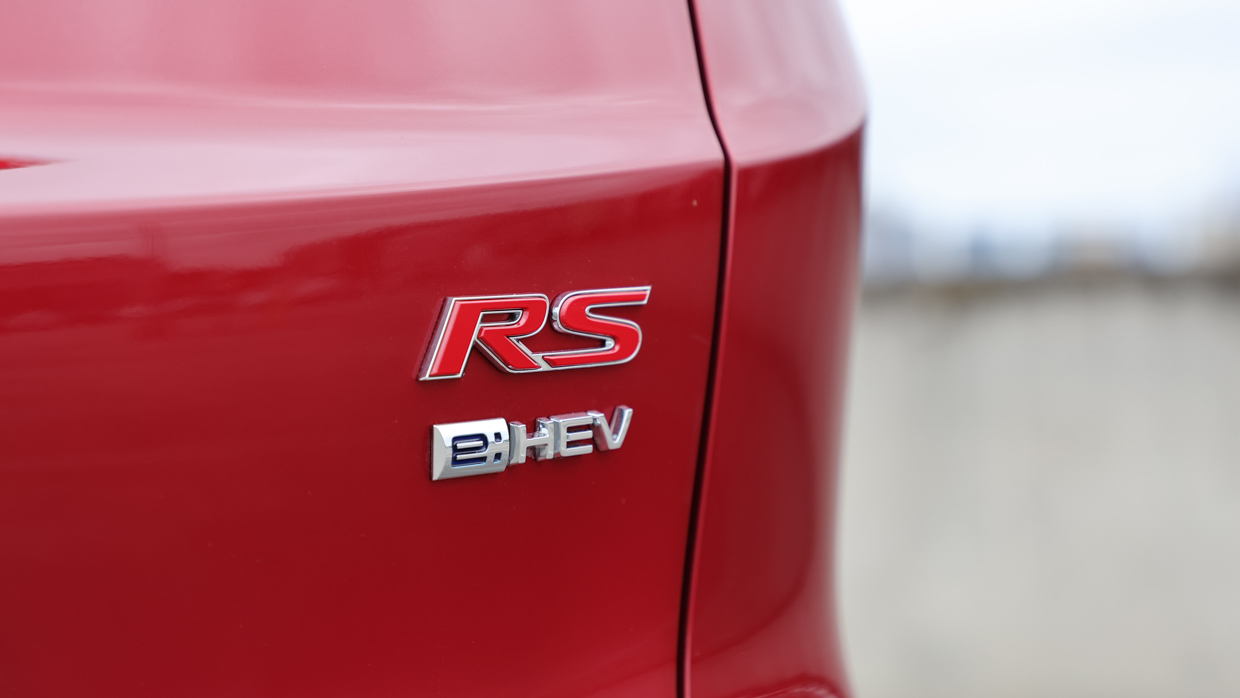
The e-HEV RS costs the same to service as other CR-V models under Honda Australia’s capped-price servicing regimen, $995 for five services over five years. That’s very cheap by new car servicing standards.
Honda covers all its new vehicles with a five-year, unlimited-kilometre warranty – decent by industry standards, if not the best – and includes five years of roadside assistance.
With its smooth and punchy electric motors, the e-HEV RS might be the nicest driving variant of the new CR-V range.
But unless you’re doing thousands of kilometres each year – standing to benefit most from the slightly improved fuel economy – we’d probably just opt for the VTi LX instead.
For $2900 less, its all-wheel-drive and fitted full-size spare wheel make it a more useable vehicle, while it’s possible the ride quality is slightly nicer.
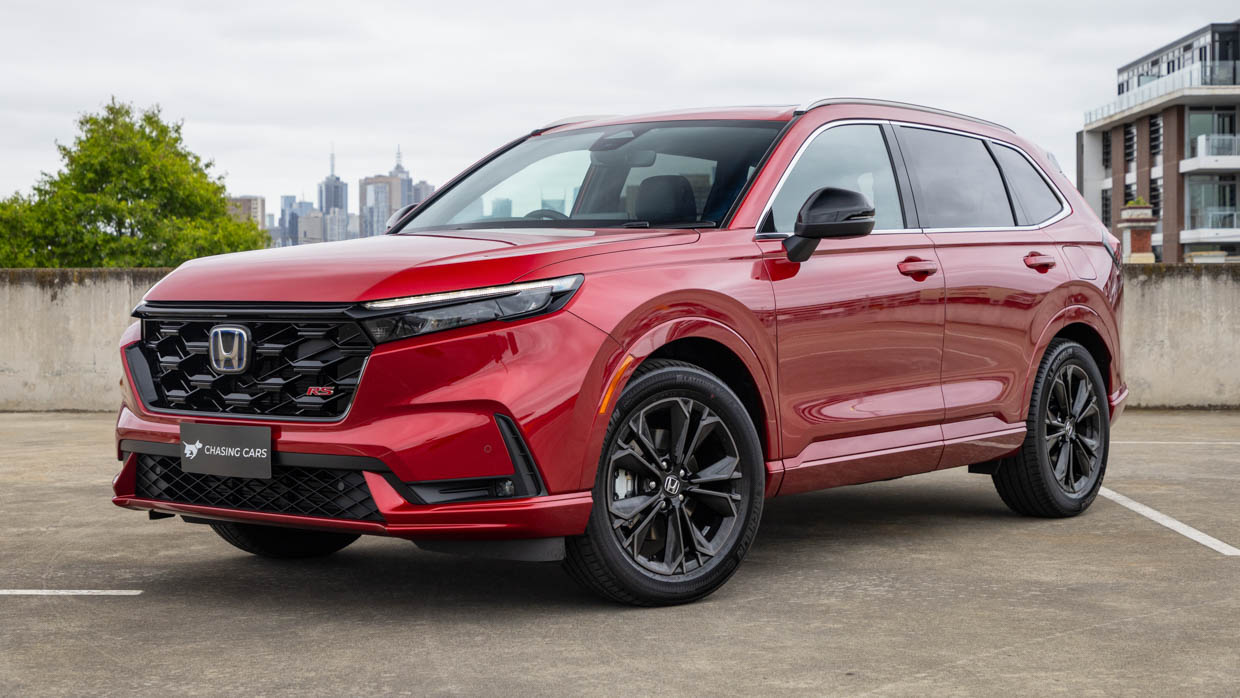
The hybrid model might out-accelerate it initially, but with the petrol powertrain’s CVT and the hybrid’s engine revs rising in a fixed way according to demands, they’d feel and sound fairly similar.
The VTi LX can also tow up to 1500kg braked versus the hybrid’s paltry 750kg, and it’s just our speculation but the VTi LX AWD might hold its value slightly better, negating any savings in petrol you may have reaped buying the hybrid.
Even though it’s the range-topping model, the e-HEV RS doesn’t work discernibly harder to wow its occupants. The VTi LX’s interior is practically just as nice.
Key specs (as tested)
About Chasing cars
Chasing Cars reviews are 100% independent.
Because we are powered by Budget Direct Insurance, we don’t receive advertising or sales revenue from car manufacturers.
We’re truly independent – giving you Australia’s best car reviews.
The estimate provided does not take into account your personal circumstances but is intended to give a general indication of the cost of insurance, in order to obtain a complete quote, please visit www.budgetdirect.com.au. Estimate includes 15%^ online discount.
^Conditions Apply
Budget Direct Insurance arranged by Auto & General Services Pty Ltd ACN 003 617 909(AGS) AFSL 241 411, for and on behalf of the insurer, Auto & General Insurance Company Limited(ABN 42 111 586 353, AFSL 285 571).Because we don’t know your financial needs, we can’t advise you if this insurance will suit you. You should consider your needs and the Product Disclosure Statement before making a decision to buy insurance. Terms and conditions apply.
Indicative quote based on assumptions including postcode , 40 year old male with no offences, licence suspensions or claims in the last 5 years, a NCD Rating 1 and no younger drivers listed. White car, driven up to 10,000kms a year, unfinanced, with no modifications, factory options and/or non-standard accessories, private use only and garaged at night.
^Online Discounts Terms & Conditions
1. Discounts apply to the premium paid for a new Budget Direct Gold Comprehensive Car Insurance, Third Party Property Only or Third Party Property, Fire & Theft Insurance policy initiated online on or after 29 March 2017. Discounts do not apply to optional Roadside Assistance.
2. Discounts do not apply to any renewal offer of insurance.
3. Discounts only apply to the insurance portion of the premium. Discounts are applied before government charges, taxes, levies and fees, including instalment processing fees (as applicable). The full extent of discounts may therefore be impacted.
4. We reserve the right to change the offer without notice.